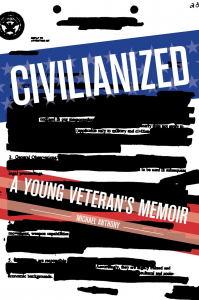 Are you or do you know of anyone suffering from post-traumatic stress disorder (PTSD)? Another name for this condition is combat stress or shell shock, which is often the consequence of a life-threatening event or severe trauma. Shock is a natural reaction of the body and mind when subjected to extreme pressure; however, PTSD happens when your nervous system remains or is stuck in that state of shock.
Are you or do you know of anyone suffering from post-traumatic stress disorder (PTSD)? Another name for this condition is combat stress or shell shock, which is often the consequence of a life-threatening event or severe trauma. Shock is a natural reaction of the body and mind when subjected to extreme pressure; however, PTSD happens when your nervous system remains or is stuck in that state of shock.
What are the symptoms of PTSD?
When do you know when you or your loved one has PTSD? Sometimes it may take different periods of time before obvious symptoms may surface. The following are the most common signs of PTSD.
- Frequent and alarming reminders of the traumatic incident. Disturbing thoughts, nightmares, and vivid recollection of the painful experience as if it is happening all over again are signs of post-traumatic stress disorder. This can be manifested in intense physical and emotional reactions such as uncontrolled trembling, panic attacks, difficulty in breathing, nervousness, and heart palpitations.
- Serious avoidance of things related to the traumatic incident. When one goes out of his way to avoid certain places, situations, thoughts, and people associated with the negative experience, PTSD is likely to be present. People with PTSD tend to detach themselves from their family and friends and become uninterested in day to day living.
- Losing the ability to think and feel positively. A person with PTSD becomes so indulged in feelings and thoughts of negativity towards himself and the world in general. He or she will have bouts of guilt, fear, and/or shame and thus become unable to relate with others as normal people can.
- Always watchful, nervous, and overly sensitive. PTSD victims are always irritable, angry, reckless, unable to concentrate, too watchful, overly reactive, and have difficulty sleeping.
What are the treatments for PTSD?
There is hope for PTSD victims and there is indeed help to overcome PTSD. Here are seven suggestions to recover from this ailment. Many of these suggestions can be done at home and by the concerned individual and his immediate family.
1. Get Physical. Release your energy by exercising or doing physical activities such as sports. When you focus your attention on your body, you begin to forget about negative thoughts and feelings.
2. Be Sociable. Being alone is detrimental to PTSD individuals. Being alone gives way to introspection which may lead to negative thinking. Spend time with a trusted friend who will listen and who is sympathetic to your condition. Being with a friend or loved one who understands you is a big step to recovery.
3. Remain Calm. When memories and feelings of the traumatic event is rekindled through things associated with it — such as sounds, smell, sight and other sensory input — take control of yourself. Refocus your mind on positive memories and thoughts that will calm you down. Relax your nerves by taking a whiff of your favorite soothing scent, listening to music that brightens your mood, or looking at photos of good times.
4. Stay Healthy. Healthy thoughts are produced by a healthy body. Take care of yourself by eating a balanced diet, getting enough rest and sleep, staying away from stressful activities, and exercising.
5. Control Your Mind. The mind is the seat of all action. Before any action could be done, it has first been contemplated on. When too many negative thoughts are entertained in the mind for a long time, they will be realized eventually. Aggressive behavior and suicidal acts have all been thought of before they even happen.
6. Fight Guilt. There is a tendency to feel guilty when you have survived a traumatic incident while others did not make it. This feeling can lead to self-condemnation which may result in self-destruction.
7. Get Professional Help. No one can help you better than an expert. You need counseling and some medication to get over the traumatic experience. You can also learn more about your condition that will expedite your healing.
Conclusion
Healing is on its way for persons who follow the aforementioned suggestions. The first step is to acknowledge that you need help which may, at first, be very difficult to do; but once you have overcome that fear of admitting that you have PTSD and therefore need help, you will surely be able to leave your post-traumatic stress disorder behind and live a happy and normal life once again.



